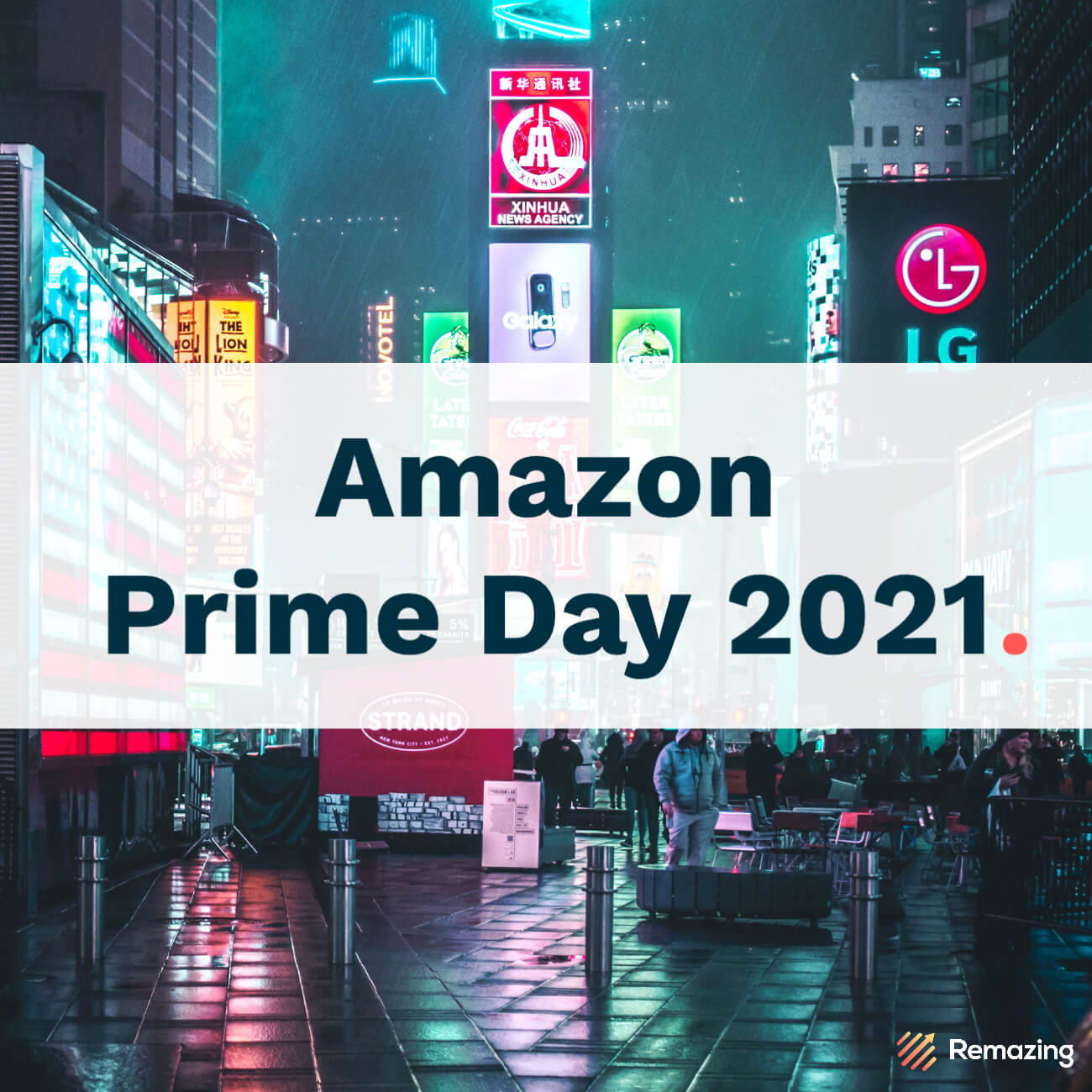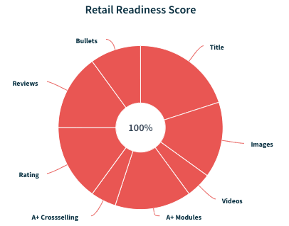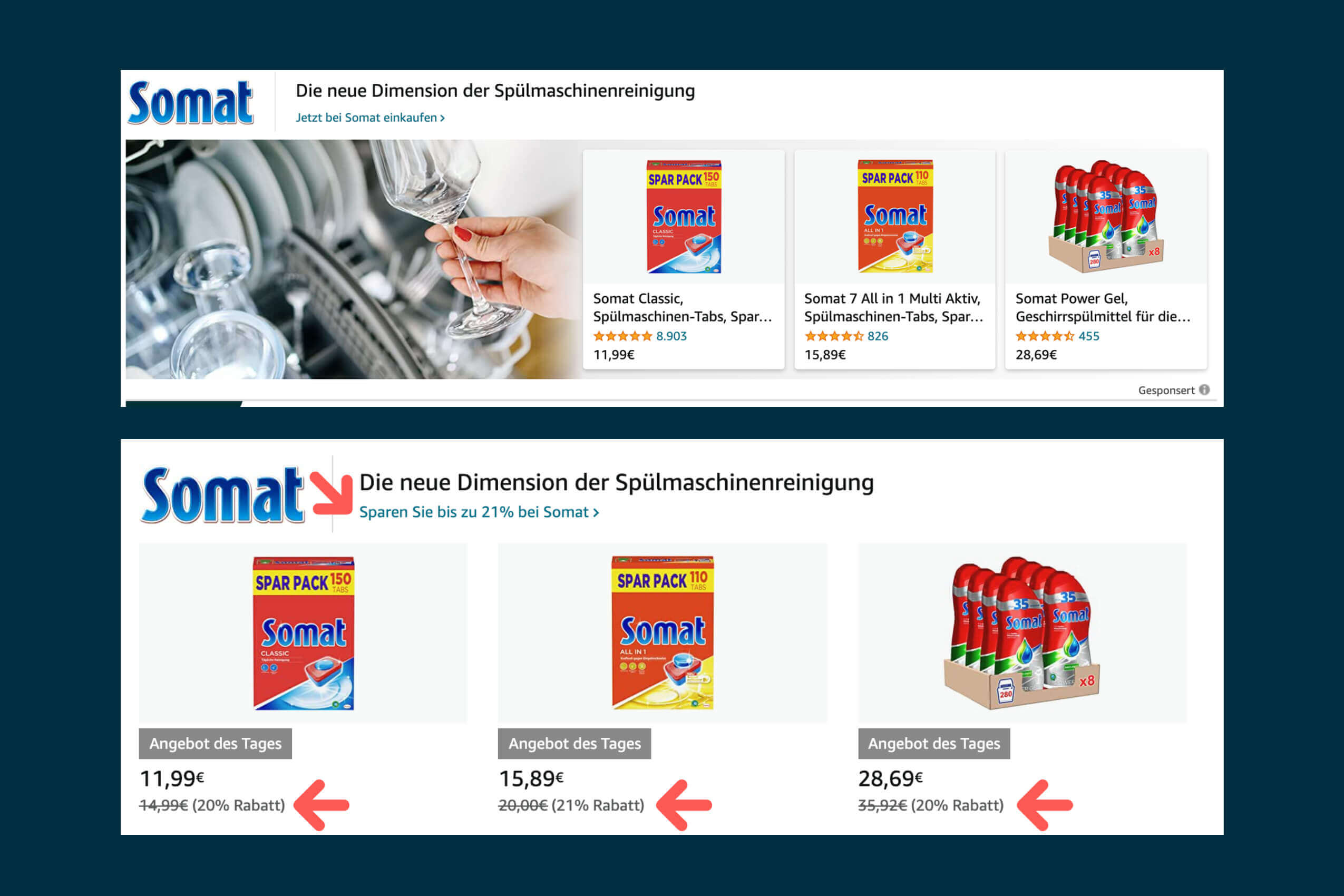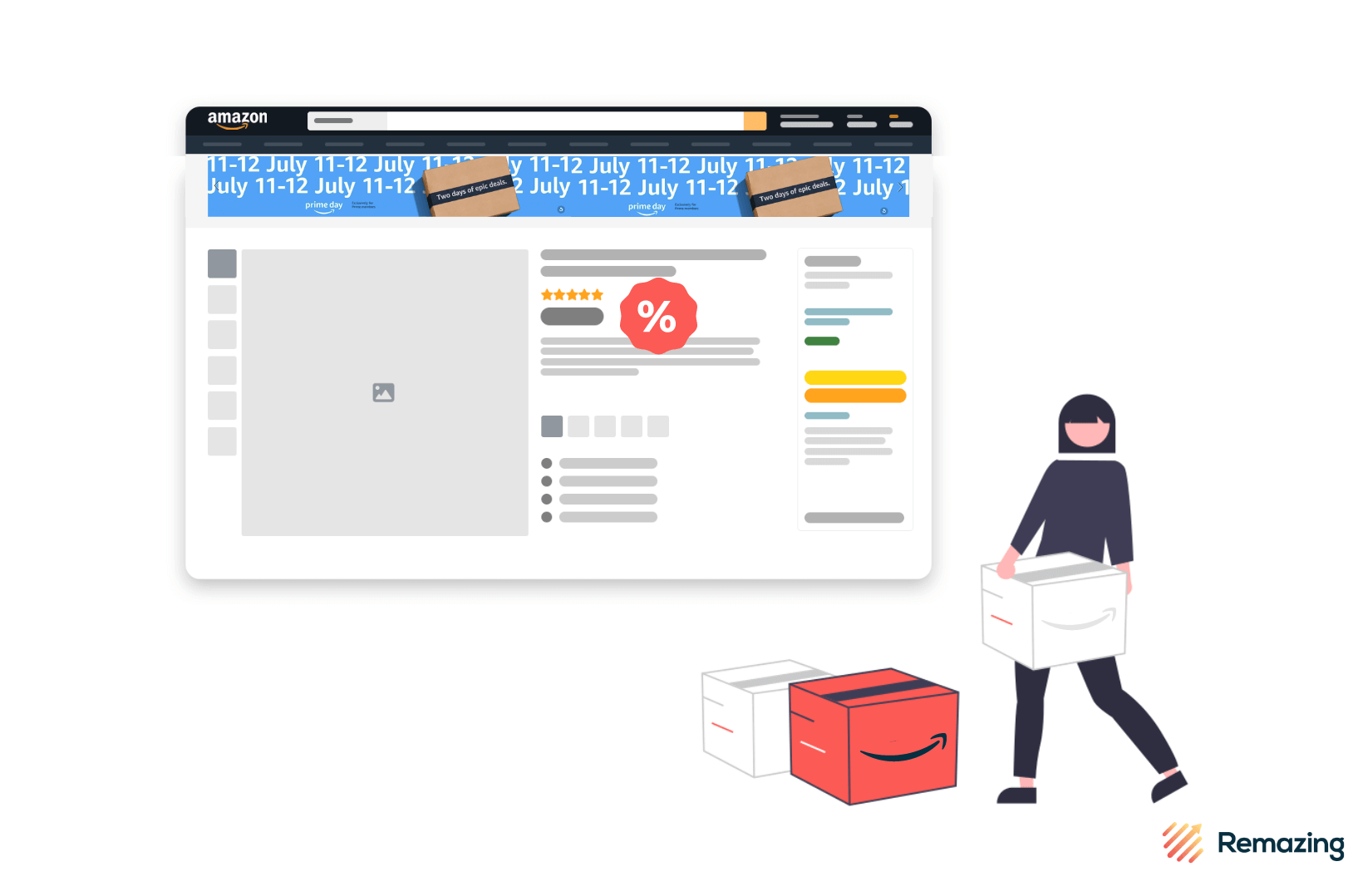
Prime Day 2021 for Brands on Amazon

Amazon Prime Day 2021 is just around the corner and like in the last few years, it is set to be one of the calendar’s biggest retail events. To achieve the desired results on Prime Day, preparation and the right Amazon marketing strategy are crucial.
Prime Day 2021: The Timing
After the pandemic-necessitated postponement of Prime Day 2020 to October, Amazon’s deal event will return to the Summer of 2021. Furthermore, it won’t take place as usual in July but in June of this year. This was announced by Amazon’s CFO Brian Olsavsky recently alongside the publishing of their Q1 financial results. The company wants to “test” Prime Day in June this year, as July is a holiday month in many regions. Therefore, it is better for the consumers and all vendors, for the Event to take place before June, according to the official explanation. In addition, there are concerns that supply shortages due to the holidays, but also the upcoming Olympic Games, could be limiting factors for a July Prime Day. However, Prime Day in Canada and India has been postponed to an undetermined date due to rising Corona case numbers.
At this point, one can only speculate whether the shift also serves the purpose of continuing the strong year-on-year growth numbers of the last quarter. In any case, one must assume that Jeff Bezos’ last quarter as Amazon CEO will be a very successful one.
Prime Day 2020 Review
In Q4 of 2020, the two biggest Amazon events of the year took place within a few weeks of one another: Prime Day and Black Friday. This led to speculation about whether the timing would have a negative impact on the performance. But, the total sales on Prime Day was again a record, and with an estimated 10.4 billion US dollars, 45% higher than the previous year. Even if the growth from 2018 (5.19 billion $) to 2019 (7.16 billion $) was higher in percentage teams, at around 71%.

In one of our analyses, we also reported on the results of a delayed Prime Day in 2020. In an evaluation of over 400,000 products from our customers, we found that brand owners that took part in the promotional event, had on average, four times higher turnover compared to the previous week and also didn’t suffer because of the offers, in the week after the deal event.
Actions for Prime Day
Like every year, Amazon will continue to beat the advertising drum and ensure a big increase in the number of users on the platform. To create the optimal customer experience, Amazon has clear requirements: For one, being displayed as a prominent brand with sales-driving categories on the home page, but on the other hand, results from searches should be filled with “Prime Day offers”. Overly conservative inventory planning that leads to “out of stock situations” are frowned upon.
Initially, it makes sense for sellers to quickly consider Prime Day through the eyes of the consumer, as this will also have an impact on strategy: The consumers have learned from previous experience that products are reduced on Prime Day. Bigger purchases are often saved to make the purchase precisely during the deal event. If they are in the mood for shopping, smaller and more impulsive purchases are made. Whilst the customer journey on Amazon on “normal days” often begins with a search, on Prime Day you can proceed on the assumption that any and every offer page will receive a lot of traffic through attention-grabbing banners and significant interest in discounts.
Below we want to outline how manufacturers can best prepare for this eventful day and what should be the focus in the preparation as well as during Prime Day itself.
Before Prime Day
Choice of Products and Offer Types
When it comes to the choice of products, several questions should be asked:
- Which of my best sellers can be sales drivers during Prime Day?
- Which of my new products/long-tail products can I advertise during Prime Day and give more long-term visibility to?
For vendor clients: Amazon usually gets involved in the selection of products and takes selection about which products are suitable. It’s also normal for a reduction in the actual purchase price. This should be considered in your proposal and worth considering for which products it is worth doing.
Prime Day on Amazon is all about Prime Day deals, which are also featured on the respective Amazon pages, which gives the deals additional traffic. These deals must normally offer a minimum discount of 20%. The run time of the deals is agreed with Amazon and can last up to 48 hours, but they can also be significantly shorter.
It’s important in doing so to know the exact periods, as the time of the deals has a significant impact on the outcome. For example, deals during the evening are empirically more attractive than deals in the morning or even at night.
Moreover, there’s the possibility of profiting with “normal deals” from the increased traffic to the platform.
The deadline for the self-service lightning deals for vendors and sellers was April 23, but vendors still have the opportunity to set up offers with the Amazon Vendor Services team. These Prime Day deals usually have a minimum discount of 20% and are set up at least 30 days before the deal event. Sellers can set up Prime-Deals during a limited Prime Day window, in addition to lightning deals. For selected sellers with an Amazon account manager, there is also the option of the “Top Deals” (formerly Deals of the Day). The time in which offers can be created via Amazon varies and should be discussed with the appropriate contact person.
Retail Readiness Score
To best take advantage of the increased traffic on Amazon, the product detail page (PDP) should be optimized, which leads to a higher conversion rate. The retail readiness score is incorporated into our own Amazon Tool, Remdash, and indicates to what extent a PDP is ready for selling. For the score, Remdash takes into account all the relevant quantitative content KPIs and weights these according to their impact on the purchase decision of the customer. The title length, the number of bullet points and images, the existence of video content, the number of applied A+ modules as well as the use of an A+ cross-selling table and also the rating and number of reviews are all considered in this estimation.

Additionally, the content should also be qualitatively optimized: In particular, SEO-relevant keywords in the title, bullet points, and product description, as well as meaningful, informative images in the product gallery, are essential for good traceability and conversion.
Creating Advertising Campaigns
The traffic on Amazon is already sharply increasing even before Prime Day which is why it’s essential to already have your products visible before the deal event – even if in some cases the consumer is just informing themselves and wants to wait before purchasing. The Amazon marketing strategy for Prime Day and resulting goals are strongly related to whether Prime Day offers are participated in. Depending on the goals and number of products on offer, an increase in the budget, as well as bids, can be determined.
The various possibilities for advertising through Sponsored Ads and Amazon DSP can also bring an additional uplift to the Amazon Prime Day offerings. Below we will briefly outline the separate types of advertising.
- Sponsored Product Ads:
Instead of establishing new campaigns for Prime Day, it’s advisable to use existing campaigns or to set up campaigns well in advance of the event. Due to historical data regarding the keywords, these perform better than newly created campaigns. Additionally, automatic campaigns are useful to bypass the potentially missing Amazon history, and in particular to highlight the products in Amazon deals.
To make the deal products as visible as possible, the ASINS should be integrated with deals for Sponsored Product Ads in particular.
- Sponsored Brand Ads:
Here the same principle applies: The more historical data campaigns have, the better, Ideally suitable here are campaigns, which are linked directly to the offers page on the Brand Store. Some campaigns, once designed, can be reactivated for future Amazon deal events again and again.
As the badges for products with offers are only shown on campaigns without a custom image, the picture can be removed from the campaign for deal products for the length of the offer.
Furthermore, it’s recommended to place products with deals in the first two positions of the advertising banner to make them directly visible on the move.

Subscribe to our newsletter now and receive regular updates on Amazon and other online marketplaces.
Subscribe to the newsletter now.

- Sponsored Display Ads:
To protect your PDPs from competitors and to prevent visitors to your product pages from arriving on a competitors’ product through a Sponsored Display ad, you should also make use of SD campaigns yourself. In this way, one’s PDPs are promoted with similar products and used for cross- or up-selling. Additionally, similar competitor products can be advertised with deal products to generate interest and win additional customers.
- Amazon DSP:
The traffic-heavy week before Prime Day offers a good opportunity to generate attention and visibility for the products portfolio. With Amazon Demand Side Platform campaigns, relevant audience groups can be targeted and directed to the PDP or relevant brand store page with the help of appealing creatives and a call-to-action.
Customize Brand Store & Images with “Prime Day content”
To make it easy for Amazon customers to search for products with deals and to collect all the deals of your brand, a “deals” subpage should be set up on the brand store. In the ideal scenario, this tab is available directly after the homepage to be as visible and easily accessible as possible. Additionally, it’s possible to create images and banners for both the brand store and PDP that highlight the deal event.
During Prime Day
Check Stock and Inventory Levels
It’s advisable to regularly check the inventory levels of advertised products. Even if it’s no longer possible to send large quantities to an Amazon warehouse, conclusions can nevertheless be drawn regarding the advertisements. Products that are likely to no longer be available should therefore no longer be actively advertised.
Adjust Advertising Campaign Budgets
Here we are recommending strategically increase the campaign budgets at two important points:
- When your own Prime Day deals are active
- When neither you nor your competitors’ deals are active
Customize Advertising Campaign Keywords
This also applies to campaigns that contain discounted products. Here it is worth using keywords like “offer”, “deal” and “Prime Day” during the period of the offer, which will commonly come up in the most searched terms during the event.
Adjust Advertising Media
It should be ensured that products that are advertised via deals are preferably displayed in Sponsored Product- and Sponsored Display campaigns. In Sponsored Brand campaigns, the advertised products should always be shown in the first two places, as it is only here that the label “offer of the day” appears. This is a real driver of both clicks and performance.
After Prime Day
Measuring Results
As a first step, it’s advisable to look at the concrete results of the deals and advertising activities and in doing so gauge the success of the chosen measures. On the other hand, it should be noted, whether participating in Prime Day offers has a positive halo effect on your brand. For example, it is worth evaluating whether the consumer searches for the brand more often after Prime Day. This is possible with the “search term report” from Amazon, or through measuring the impressions of ad campaigns that contain branded keywords.
In addition, Prime Day deals can lead to products also ranking better in organic search rankings on Amazon due to their increased sales. For this, the glance views or best-seller rank of the product is a good indicator. At Remazing, we are using the metric “share-of-voice” for analysis which indicates, at a keyword level, the proportion of our products in the search results.
Extension of Advertising Activities
It’s a good idea to also allocate a slightly increased ad budget for the period following Prime Day. In this way, you can, for example, target designated users that have bought your products throughout Prime Day with Sponsored Display or ADSP campaigns, and then show them a complementary product.
Document Learnings
After Prime Day, comes Cyber Week: The next big event is surely on the way. We highly recommend tracking and preparing the KPIs that have helped define a successful Prime Day. The goal is to increase your internal effectiveness while also the results of the next big retail event.
The Bottom Line: Start Preparing For Prime Day 2021
After last year’s successful Amazon event, it can be assumed that this year’s Prime Day will also cause quite a stir and drive up sales.
Thorough preparation as well as setting the right Amazon Marketing strategy in the weeks leading up to Prime Day are crucial for success. But after Prime Day it is worth measuring the results achieved, extending advertising campaigns beyond the deal event, and documenting and preparing your learnings.
To finish it up, we summarize the actions we propose for Prime Day:
Before Prime Day:
- Choice of Products and Offer Types
- Check Retail Readiness Score
- Create Advertising Campaigns
- Pro tip: Customize brand store & images with Prime Day content
During Prime Day:
- Check Stock and Inventory Levels
- Adjust Advertising Campaign Budgets
- Customize Advertising Campaign Keywords
- Adjust Advertising Media
After Prime Day:
- Measuring Results
- Extension of Advertising Activities
- Document Learnings
Are you interested in an expert analysis of your Amazon account?
Request free analysisRemazing GmbH
Brandstwiete 1
20457 Hamburg
©Remazing GmbH



